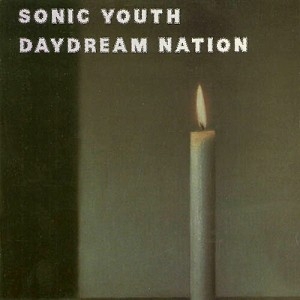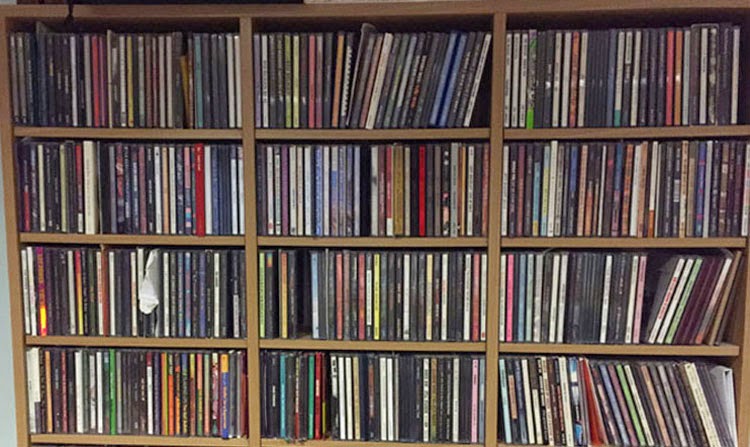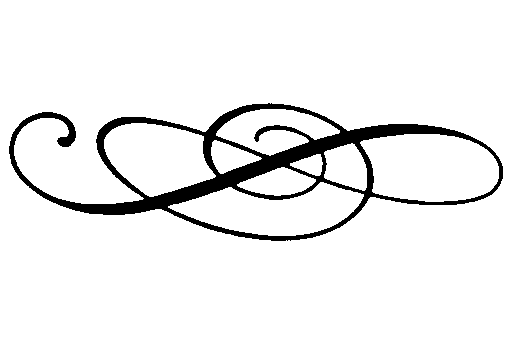

 Sonic Youth
Sonic Youth
| Release date | Label | Producer | Genre | Length | More info |
| 1988.10.?? | Enigma | Nick Sansano | Art Rock | 70:47 |  
 |
A nation that forgets its daydreams is doomed to have Sonic Youth replay them for it.
Background
It is a bit strange that, no matter how huge was the influence that The Velvet Underground exerted upon the entire underground / alternative musical scene, the first band that actually tried to be The Velvet Underground for a new generation had to be Sonic Youth - an Eighties band, with no direct analogy in the preceding decade. Perhaps it had to take some time, since even the least commercial bands of the Seventies, inspired by a temporary refinement of public taste, had the idea of financial success in mind; Sonic Youth, for the entire duration of their most creative period, did not set that as even a remote goal - ironically, it was not until the phenomenal critical triumph of Daydream Nation that they began seriously considering the idea of a major label deal, and most of their output since then has been judged inferior to the "glory days" period of EVOL, Sister, and Daydream Nation. Which is not to say that early Sonic Youth were totally inaccessible or unlistenable: the band had a good ear for hooks and a high level of tolerance for traditional pop/rock values from the beginning - just like The Velvet Underground, who were never above capitalizing on a tasty pop hook if they thought of one. But most of all, like The Velvets, what they loved was the stretched-out, free-flowing, drone-based sound of the electric guitar - not as an accessory for a catchy chorus, not as a prerequisite for a kick-ass hard rock riff, but just for its own sake.
One reason, I think, why the critics had so much admiration for the rough'n'gruff pair of Thurston Moore and Kim Gordon, was that, in spite of all their alleged experimentation and innovation, in the overall context of the Eighties they actually represented a very old school of musical thought. Instead of playing hardcore punk, thrash metal, synth pop, or any other trademark styles associated with the decade, their preference was to produce burbling, blubbing, buzzing, and sometimes even jangling drone-rock that really owed much more to Lou Reed, Syd Barrett, and Neil Young than to any of the newer, post-1976 guitar styles. I remember being almost taken aback at my first acquaintance with those records - expecting to find something completely "unlistenable" from America's prime time avantgarde band, I found a clearly retro-oriented sound instead, and not even Moore's unconventional guitar tunings (also a trick he probably picked up from Lou Reed rather than anybody younger) could convince me otherwise. No wonder that they got much praise from old rockers like Neil, and also served as model inspiration to so many people from the grunge scene, who probably thought of them as fearless innovators, but subconsciously loved them because of this strong link to rock music's Golden Age. And in this context, it is particularly fitting that it is Daydream Nation, the album that arguably finalizes Sonic Youth's journey from "intentionally ugly-avantgarde" to "naturally ugly-accessible", that is so often regarded as the band's peak - like their Sixties idols, whom they unsuccessfully tried to kill, they began by tap-dancing on the backbone of their talent, only to have the invisible hand of fate gradually remove them from that position and force them to nurse and nurture that talent. And the more accessible they became, the more the critics loved them. And even Kurt Cobain, so it is said, preferred Daydream Nation to Confusion Is Sex.
Some basic factsDespite the double LP format, the key difference between Daydream Nation and its predecessors is largely the song length: whereas earlier albums usually respected the 3-4 minute length barrier, for Daydream Nation they felt confident enough to stretch out for as long as the groove power could carry them, which ties in fairly well with the grand old tradition of The Velvets and Neil Young, and possibly explains the critical praise, since listeners were smitten with the expansive scope of the record. Commercially, this did not help them one bit: the album, like all of its predecessors, did not even begin to chart - although it probably improved their reputation enough to assist the subsequent transition to a major label and, consequently, improved sales. (It is still fairly ironic that the band's highest charting record to date was their very last: The Eternal, released in 2009 - it took the general American public more than a quarter century to finally believe the critics about Sonic Youth being a national treasure and all that). Yet as far as critical reverence is concerned, I suppose that there is not a single "hip" best-of list in the US since 1988 that does not have Daydream Nation in its Top 10 (overseas, things are probably a little different: I'm fairly sure that a lot of European snobs consider the band highly overrated and nowhere near as brazenly avantgarde and dashingly experimental as they are seen in the US, but that should not bother an objective reviewer). It does have the superficial look of an album, though, that would seem to be more revered in theory than listened and relistened to in practice - so let us meditate a bit on whether it's actually a fun record, or if it's just there to provide an opportunity to meditate.
For the
defense
I don't know if this will make sense to anybody, but every time I listen to Daydream Nation, I get the overall impression of a "highway album", a lengthy, monotonous, but somehow gripping ride through a long, long, long stretch of the road with little other than an incessant line of same-looking telegraph poles zipping by. Obviously, this has to do with most of the songs playing similar guitar patterns at a similar tempo - and, by the way, it does help a lot that the tempo is relatively fast (about as fast as you can make it without all the notes blurring into a chainsaw buzz). By 1988, Sonic Youth had one of the best grooves in the country: a sound grounded tight enough in old school hard rock values to make it as ass-kicking as ol' time Stones or Stooges, but with enough variety in the combinations produced by the two guitars to prevent the music from becoming boring. Just like that highway ride, which is boring / monotonous (because the road never changes) and exciting (because of the speed) at the same time, these songs combine the hypnotic aspects of drone music with the gruff energy of hard rock in a way that is totally derivative, yet quite original at the same time.
I still find it hard to distinguish between individual songs, to tell the truth. ʻTeen Age Riotʼ and ʻSilver Rocketʼ are often singled out as highlights, but I am fairly sure that this is (a) because they were the first two singles from the album and (b) the first two tracks on the album (and this, in turn, raises suspicions about whether everybody really had the strength to sit through the entire thing). The thing is, every single song on the record creates the exact same mood, and all of its different riffs say more or less the same thing in so many different ways. What that mood is is very hard for me to define, though. Not anger, not depression, not paranoia, not melancholia, not even psychedelia - more like a dizzy, smoky, sickly sonic fog combined with a hustle-bustle; an overall sense of dense, thick nastiness, perhaps, through which you have to cut your way, although why you have to do this and whether you will be able to get anywhere through it remains a mystery. Perhaps the song title ʻTotal Trashʼ can be taken as an indicator - the record has a very "trashy" sound, bordering on "thrashy" (indeed, tone the guitars a little lower on ʻ'Cross The Breezeʼ, and you could mistake it for a classic Metallica tune), and it is perfectly understandable if people have a hard time taking in seventy minutes of it in one go.
But once you're in the zone, the ride across Daydream Nation becomes a smooth, one-of-a-kind trip with its special coolness. The rhythmic base of the grooves is simple enough to lure in even those who have problems with art-rock experimentation, and, most impressively, the riffs are generally identifiable and memorable: all of the songs here seem carefully pre-composed, and Moore's special guitar tunings help make even the simplest riffs acquire their own sonic sheen - cue ʻSilver Rocketʼ, which, under normal life circumstances, would sound just like a regular late Seventies punk number, but under Sonic Youth conditions, sounds like an alarm going off rather than a pissed-off blast of anger. (Transposing it to a different key in my mind, I get the fade-out riff from the Stones' ʻSalt Of The Earthʼ for some reason - that's just to illustrate how predictable the whole thing is, but it doesn't make it sound less awesome, 'cause it's not just a matter of intervals, you know). There's plenty of rhythm-breaking noise, too, but not a single song here is just noise: the atonal sections usually (sometimes too predictably) appear in the middle of the songs, performing the function of the bridge, and then go away - it's as if the tight locomotive of the song eventually overheats, splintering into several hundred shards of broken sound, and then, if and where possible, upon cooling down, self-assembles again and carries us through yet another round. And that noise is often interesting: the aforementioned ʻTotal Trashʼ, for instance, really sounds like a stalling locomotive that the band is trying, at all costs, to get going - huffing, puffing, even shoulder-pushing when necessary, before getting it to run for just a few extra bars at half-speed and finally collapsing beyond repair.
Some people seem to have serious problems with the vocals - and it's true that neither Moore nor Gordon were ever great vocalists, and both have their irritating aspects (Gordon tends to scream off-key way too often, and Moore is simply a passionate speaker rather than singer), but they do know how to add repetitive, memorable vocal hooks to the guitar melodies: be it Moore's "You got it / Yeah, ride the silver rocket", or Gordon's "Come on down to the store / You can buy some more", or, once again, Moore's "All coming from human imagination / Daydreaming days in a daydream nation", these are all tasty vocal tidbits that are most likely going to cling to your memory - and add to rather than detract from the basic meat 'n' potatoes of the album, which is, of course, the guitar melodies and their interaction with the rhythm section.
And then, last but not least, there's the totally unexpected coda of ʻEliminator Jrʼ (so titled because the track seemed to be a cross between Dinosaur Jr and Eighties' ZZ Top to the band members - I don't quite see either connection, specifically, but whatever): coming as the last part of the rather spuriously assembled ʻTrilogyʼ, it breaks away from the typical style of the album and gives you a weird, brutally harsh, almost industrial-style coda (I could see something like this on a Ministry album, easy), with the guitars playing jackhammer games on your brain and Kim moaning and groaning as if each bar were a bullet going through some tender part of the body. It does have a pretty awesome effect, especially first time around, when I was still not used to the vibe and had almost drifted to sleep by the time of ʻTrilogyʼ - a sharp, rousing kick to the groin to make sure you stay awake for at least the last three minutes of the experience. As you do get used to the vibe and begin to cherish it, the original function of the coda becomes less useful, but still symbolic. It's like the bulk of the album is the equivalent of the uneasy journey of Easy Rider and the last three minutes are the equivalent of the movie's gruesome finale. All you have to do is dump the bodies and start anew.
Lyrics-wise, Daydream Nation is not great, but passable: they provide the general impression of a trip through the world's averaged state of mind in 1988, with occasionally sprinkled references to anti-commercialism, anti-stardom, gender issues, time issues, big city life, and a lot of verbal chaff that will be vivid poetic imagery to some and meaninglessly strung together words to others. The good news is that nothing is too straightforward or too specifically tied in to its epoch, so that most of the lyrical observations that were relevant for 1988 continue to be relevant for 2018, and probably way beyond. Even a song like ʻTeen Age Riotʼ which, in the hands of a different band, would probably have a very straightforward interpretation, is dominated by lyrics like "It's getting kind of quiet in my city's head / Takes a teen age riot to get me out of bed", and the song's fast pace and energetically strummed chords and maniacally spun trills are charged with a sort of internalized pulse, rather than provoke you to take to the chair-smashing routine right away. If you really want to, you can find riot and rebellion in the record; but if you don't want to, you can find plenty of arguments to deny their existence, and this ambiguity does elevate Sonic Youth high above most of their alt-rock competition.
For the prosecution
Well, it is a long album, and a one-trick pony is a one-trick pony, no matter how awesome the trick in question can be. I don't mind it too much, because the album takes no wrong turns whatsoever (with the possible exception of ʻProvidenceʼ, the only track that seriously disrupts the flow, with an ambient, Harold Budd-esque piano melody meditatively played over a bedrock of feedback that sounds like crackling flames and a spoken voiceover from Minutemen bass player Mike Watt - atmospheric for sure, but questionable); however, seventy minutes of the same formula still begs for the question of whether the whole thing could have been trimmed from excessive fat, and this, logically, should lead to the question of whether all these songs really have first-rate riffs. Just for fun's sake, a perfectly trimmed Daydream Nation, in my mind's eye, would consist of ʻTeen Age Riotʼ, ʻSilver Rocketʼ, ʻ'Cross The Breezeʼ, ʻTotal Trashʼ, ʻCandleʼ (the closest thing this album has to a fast-paced ballad), ʻRain Kingʼ, and ʻTrilogyʼ, leaving out the other tracks because they're somewhat less riff-alicious. On the other hand, who knows, perhaps it is the length that really contributes to Daydream Nation giving the impression of this lengthy, sickening, painful, but inescapable road trip - take out the alleged "filler" and you're left without the epic feel.
In any case, neither the length, nor the technical flaws in the singers' voices, nor the monotonousness of the arrangements should seriously prevent one from enjoying the record. The overall formula of Daydream Nation is strictly limited, but it is, on the whole, a unique formula, and it is loyally adhered to and near-perfectly realized all the way through, which is why, I believe, it is downright impossible to "love" parts of this record and "hate" other parts of it - you simply either get it (all) or you don't get (any of) it. Or, more precisely, as in my case, you remain unsure if you get it or not, but you remain permanently intrigued by its Lost Highway mood.
Conclusion
| Melody | Voice | Mood | Production | Innovation/Influence | Where it belongs | RYM preference | |
 |
 |
 |
 |
 |
 |
#36 (Aug 28, 2016) |

| Previous entry | Main page | Next entry |